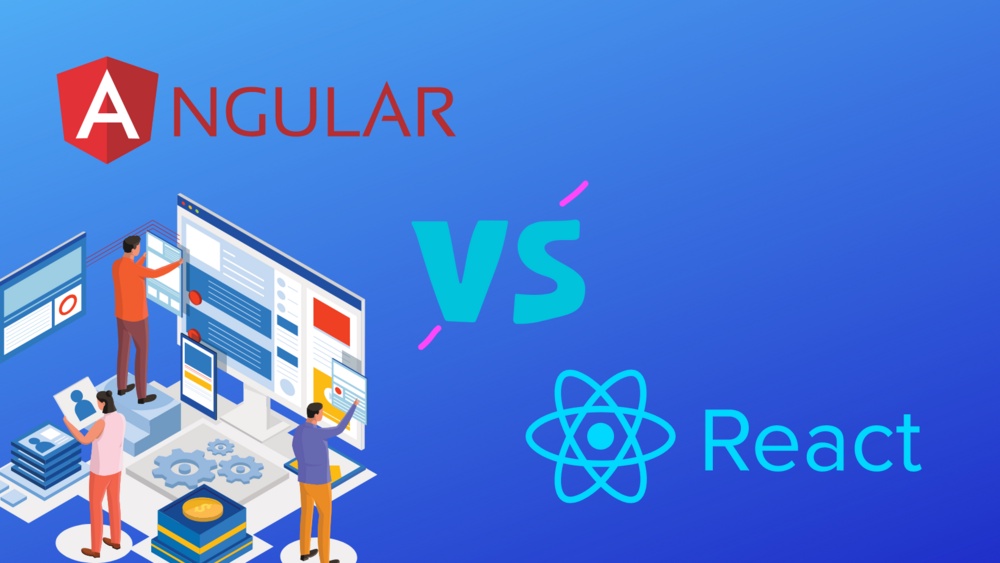Choosing the right JavaScript framework can be tricky, but it doesn’t have to be! Before you jump into development, it’s important to make sure that your choice of framework fits with your project requirements as well as how you and your team work best. There are some key considerations you should keep in mind as you weigh Angular vs React and decide which framework will best suit your needs.
Introduction
If you're looking to build a JavaScript application, the two most popular frameworks are Angular and React. But which framework should you choose? There's no easy answer as each one has its own benefits and drawbacks. For this post, I will explore both Angular and React in depth so that you can decide on the best fit for your project. One of the reasons Angular remains popular is because of its near-native performance. It outperforms React significantly and offers better features for developing user interfaces.
One downside of Angular is that it doesn't allow much freedom with regard to component development, but it does offer an excellent developer experience which makes up for this drawback in many ways. On the other hand, React is extremely flexible when it comes to component development but lacks native performance capabilities compared to Angular.
What is Angular?
AngularJS lets you extend HTML vocabulary for your application. The resulting environment is extraordinarily expressive, readable, and quick to develop. Angular uses a declarative syntax which makes it easier to express the dynamic parts of an application without having to worry about how the data will get from point A to point B.
Angular does not use any DOM manipulation; instead, it relies on directives that attach a behavior or a template (or both) to an element in the DOM. It supports two-way binding with scopes as well as dependency injection to make testing a breeze. It also has animations built in so you can have smooth transitions between views. Check out the Advantages of angular for better clarity to choose one.
What is React?
React is an open-source JavaScript library used to create user interfaces. It's a component-based library, which means that it uses small, self-contained pieces of code instead of one large application. This makes it easy to reuse and update code as needed. A set of instructions called reactive programming determines how the different components interact with each other. Components can be reused across different pages or even in different applications.
The differences between Angular and React
React and Angular are popular JavaScript frameworks that help developers build web apps. They're different from each other in a lot of ways, but let's take a look at some of the key differences.
One difference between Angular and React is how they handle data binding. Data binding is what allows you to link user interface components with your application data model so changes to one will automatically be reflected in the other without manual code updates.
With React, we use two-way bindings which means updating any object on either side will trigger an update in the other direction. With Angular, we use one-way bindings which means when you update anything on either side, it only propagates in one direction.
For example, if you were to edit the title of a blog post in your app through its UI component, this change would propagate back up to the model layer and update the corresponding record on our backend database. But if you were to change something about that post’s content using code (e.g., by adding or removing text), this change would not propagate back down into our UI component because Angular uses one-way bindings by default.
You can still use two-way bindings with Angular if you want to, but it requires more work. Another key difference between these frameworks is how they treat DOM manipulations. When writing markup and CSS in React, we can directly manipulate HTML elements in the browser as long as we've set them up correctly as inline styles or wrapped them within a container element that has styles applied via className attributes.
So, which one should you choose?
Both Angular and React are excellent frameworks with different strengths. The most common question that people have when it comes to choosing which framework to use is, What's the difference between Angular and React? It's important to know that there are many ways to answer this question because there's not one single characteristic or feature that makes Angular or React better than the other. The choice really comes down to what type of application you're trying to build and how much time you want to spend learning a new framework.
Conclusion
Each framework has its own pros and cons. Angular can be hard to get started with because it requires a lot of experience, but it also has more out-of-the-box functionality than React does. React, on the other hand, offers better performance and a simpler learning curve.
When deciding between the two frameworks, you should consider your team's skill set and project requirements. In general, Angular provides more options at the beginning and allows for easier customization in the future; whereas React is lightweight and more reactive.
If your team needs to start developing features quickly while keeping code size low, then react would be a good choice. However, if you have an experienced front-end development services company that already knows how to use angular well, then angular might work best for you given all of its prebuilt features.


No comments yet